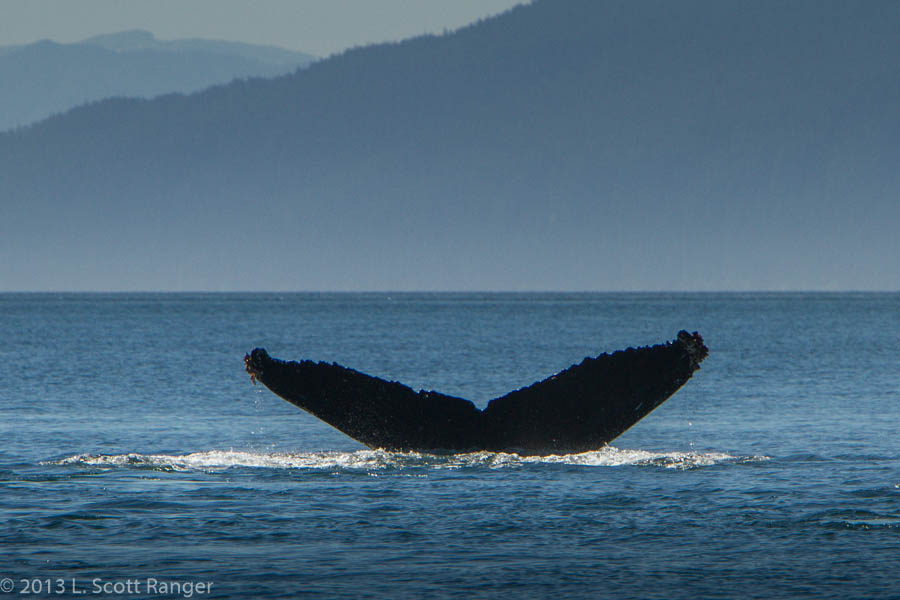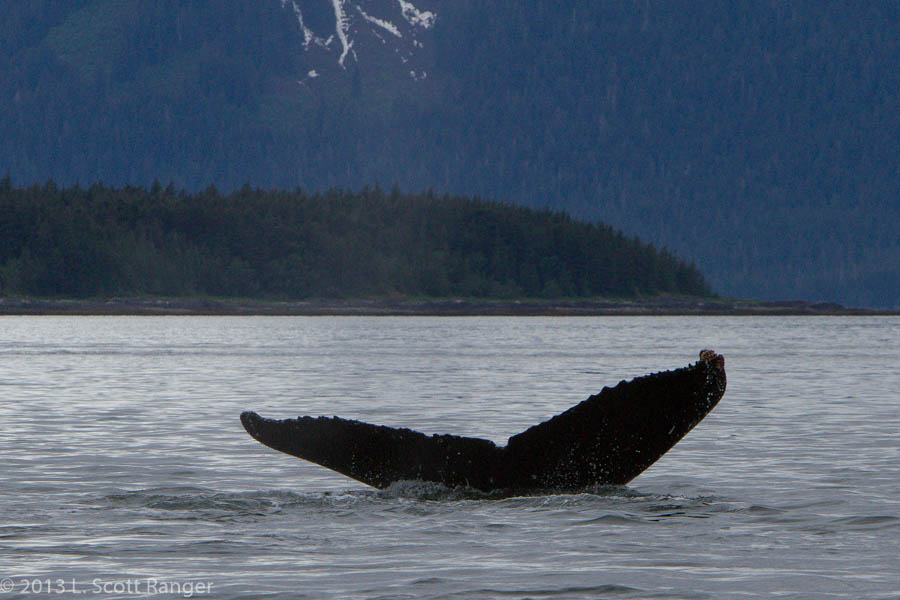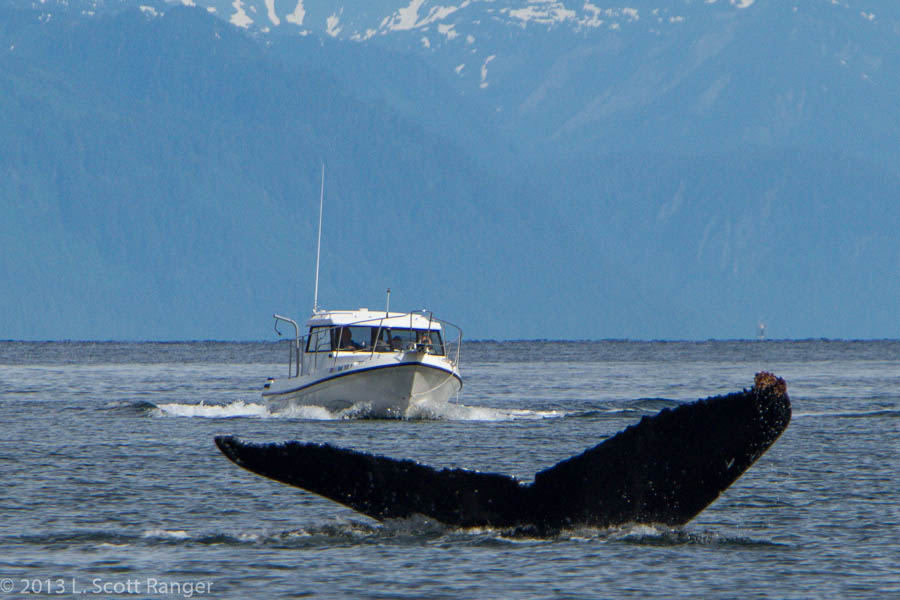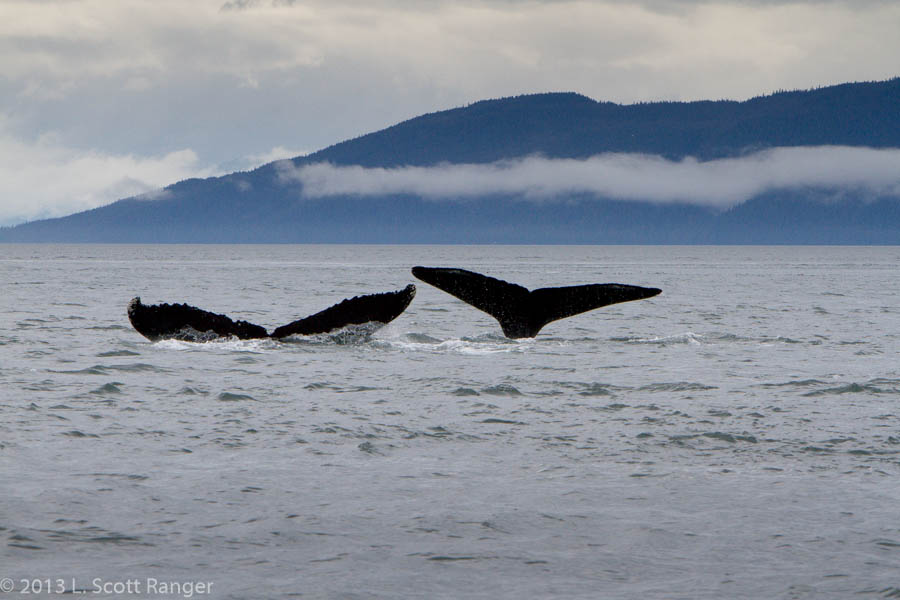1703, Bullethole
So just how did Bullethole get her name? It is not entirely clear to me. Jay Beedle calls her "Raven" and gives an identification note that she has "a small hole through her tail can be seen near the trailing edge to the left of the center of her tail". Is this a bullet hole? Looking through my 35 identified photos of her, I can see this "hole" in eight of them, but none of them are very obvious and it's only after re-reading Jay's article in September of 2013 that I went back to look. Since I met the whale I've assumed the name comes from the very nearly perfect "U" shape of the central fluke notch that reminds me of a gun sight. It's clearly not a bullet hole, but perhaps related? Can you spot it in this photo from August 14, 2010?
Bullethole was first cataloged in 2006. I have photographs of her from 2010, 2012 and 2013, missing her completely in 2008 and 2011. He notes she had a calf in 2009 and I have numerous photos of calves, many breaching, from that year but have no way to identify them with a cow.
Bullethole was first cataloged in 2006. I have photographs of her from 2010, 2012 and 2013, missing her completely in 2008 and 2011. He notes she had a calf in 2009 and I have numerous photos of calves, many breaching, from that year but have no way to identify them with a cow.
|
While the prominent central notch is her signature identifying character, Bullethole's flukes are noted for the strong and sharp serrations on the trailing edge. Two on the right side extend higher than the others and there is a distinct U-shaped notch about a third the way out from the center on the left. There is a cluster of sharp serrations on the arch just inside of the trailer of the left fluke. This photo from June 18, 2012 was taken in the waters of Stephen's Passage south of Shelter Island and just east of Point Symonds on Admiralty Island.
|
|
All three of these photos show another identification key, the small, white, linear scar a third the way in near the leading edge of her right fluke.
This sunny day photo from July 12, 2012 illustrates one potential problem our humpback leviathan friends have in the waters of Juneau: boat traffic. Here we're in Favorite Channel right in the route of the Lynn Canal ferries, and, today a small fishing boat cruising by at a good clip. All captains here must maintain a vigilant watch for whales and be prepared for immediate action to move away from them. |
|
This dorsal view of Bullethole's flukes shows just enough to identify her as she dives toward us on July 13, 2012 in the middle of North Pass.
Here she dives with one of the whales identified as new to Juneau waters in 2012 by folks on our Gastineau Guiding's Whales and Science Adventure: GGC-20120718-2698. |
|
Double tails are always exciting, and here Bullethole leads a dive with 1820, Nibblet in the follow.
I've never knowingly seen Bullethole do anything but cruise and dive: no pec or tail slaps, let alone anything as spectacular as a breach. Yet she always pleases, probably because I give myself a bit of self-congratulation for being able to recognize a black tail. |





